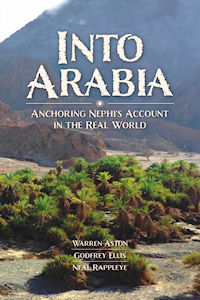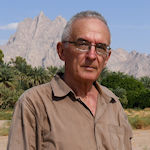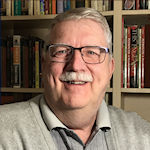 Into Arabia
Into Arabia
Anchoring Nephi’s Account in the Real World
Warren P. Aston, Godfrey J. Ellis, and Neal Rappleye
Published by The Interpreter Foundation and Eborn Books
Now Available
The book in front of you introduces the first eighteen chapters of the Book of Mormon, recounting the epic journey made over 2,600 years ago by Lehi and Sariah’s family from Jerusalem to Bountiful.
As long-time researchers of the Book of Mormon, our earnest hope is that this book will unfold to every reader Lehi and Sariah’s journey, one made in a world far removed in time and distance from our own. The chapters that follow represent the most current research into that journey and build upon the foundational studies of earlier scholars, Hugh W. Nibley and Sidney B. Sperry, the more recent explorations of Lynn and Hope Hilton and George Potter, and insights from researchers such as S. Kent Brown, Robert F. Smith, and Stephen D. Ricks. We are further delighted to have contributions from John W. Welch, Noel B. Reynolds and Jeff D. Lindsay, each of whom have also contributed significantly to bringing this ancient text out of obscurity.
Come with us now on a journey in the days of Lehi, Sariah, Nephi, and the others of their group; see where that great odyssey took place—places in Arabia seen with their own eyes—and examine evidences that support the reality of that journey.
— Warren P. Aston, Godfrey J. Ellis, Neal Rappleye
Lehi had only one option. Going northeast into Mesopotamia would have landed him right in the jaws of the Babylonian Empire. Going southwest into Egypt would have made sense, except that Urijah the prophet had already tried that–only to be hauled back to Jerusalem and shamefully executed (see Jeremiah 26:20–23). Lehi’s only option was to go “into Arabia,” as was said in the 2005 film and book Journey of Faith. Now, this masterful new book brilliantly culminates years of amazing research about that region through which Lehi’s family sojourned. These thoroughly documented pages allow all readers to walk today where Lehi and Sariah, Laman and Nephi, Ishmael and his daughters struggled and faithfully survived. All readers will find in this superb resource a wonderful and expert traveling companion.
— John W. Welch
Into Arabia shares some of the most interesting recent advances in scholarship related to Lehi’s Trail. This research helps us appreciate the ancient and authentic nature of the Book of Mormon and the value of carefully considering details in the text. The authors explore many details about Lehi’s journey and its sites such as the seemingly impossible river of Laman and the almost miraculous place Bountiful; share insights on Shazer and how it was reached; reveal new findings related to the burial of Ishmael in Nahom; and shake old assumptions about the journey along Lehi’s Trail and the length of time taken prior to reaching Bountiful. A variety of tools are applied, including actual fieldwork. This book is a treasure for students of the Book of Mormon.
— Jeffrey Dean Lindsay
Amazon
- Hardcover: $44.99
- Paperback (Color): $37.02
- Paperback (Black and White): $29.95
- Kindle: $9.99
Table of Contents
Foreword, by Noel B. Reynolds
Preface
1. Into Arabia: Lehi and Sariah’s Escape from Jerusalem: Perspectives Suggested by New Fieldwork
Warren P. Aston
2. Nephi’s Eight Years in the “Wilderness”: Reconsidering Definitions and Details
Godfrey J. Ellis
3. Nephi’s “Shazer”: The Fourth Arabian Pillar of the Book of Mormon
Warren P. Aston
4. The Nahom Convergence Reexamined: The Eastward Trail Burial of the Dead, and the Ancient Borders of Nihm
Neal Rappleye
5. Accessing Nephi’s Bountiful: A New Proposal for Reaching Irreantum
Warren P. Aston
6. Nephi’s “Bountiful”: Contrasting Both Candidates
Warren P. Aston
Index
About the Authors

Warren P. Aston is a New Zealand–born researcher based in Brisbane, Australia. Since 1984 his exploratory efforts have identified the candidates for “Nahom” and the Old World “Bountiful” now accepted by most Latter-day Saint scholars, and he remains the only person to have retraced the full Lehite journey across the Old World. After completing ground exploration in Yemen and Oman over the entire eastern coast of Arabia from 1986 to 1992, he cofounded the Khor Kharfot Foundation in 2013 and led several international teams undertaking fieldwork at the site. He is the author of In the Footsteps of Lehi (1994); Lehi and Sariah in Arabia: The Old World Setting of the Book of Mormon (2015) and numerous papers and articles. Warren’s findings have been reported in Church Education System manuals, BYU Studies Quarterly, Encyclopedia of Mormonism, the Journal of Book of Mormon Studies, Interpreter: A Journal of Latter-day Saint Faith and Scholarship and presented in non–Latter-day Saint forums such as the annual Seminar for Arabian Studies in the UK and in publications such as the Journal of Arabian Studies. He is the proud father of six children and eighteen grandchildren.

Godfrey J. Ellis is a retired professor of psychology. At retirement he was serving as the director of the master’s program in Counseling Psychology and the chair of the Department of Leadership and Counseling Psychology at a university in western Washington. After earning his BA in French and MA in Family Relations from Brigham Young University, he completed his PhD in Family Sociology and Social Psychology from Washington State University. He worked as a professor of Family Relations or Psychology for more than 36 years and as a marriage and family therapist in private practice for 30 years. He was born in England, raised in Canada and the United States, served a mission in France, and has taught in China. Ellis has published in the Ensign magazine (now Liahona), BYU Studies, and Interpreter: A Journal of Latter-day Saint Faith and Scholarship. He currently serves as the associate editor of the Interpreter Foundation journal. He enjoys painting acrylic portraits of friends, missionaries, and family (see GodfreyEllisArt.com). He and his wife are blessed with four sons and daughters-in-law, fourteen grandchildren, and three great-grandchildren.

Neal Rappleye is director of research at Scripture Central. He is involved in ongoing research on many facets of the Book of Mormon’s historical context, including ancient Jerusalem, ancient Arabia, the ancient Near East more broadly, pre-Columbian Mesoamerica, and the nineteenth-century witnesses to the discovery and translation of the Book of Mormon plates. His research has been published with BYU Studies, The Interpreter Foundation, Scripture Central, Greg Kofford Books, and Covenant Communications.


